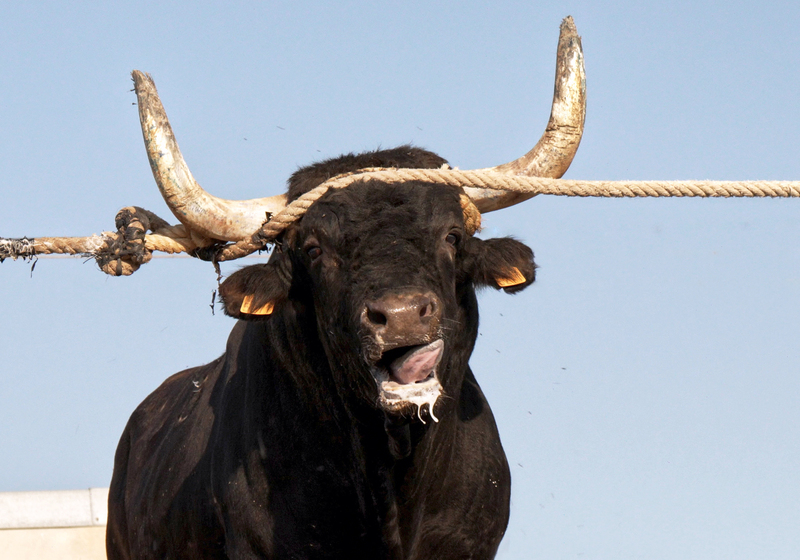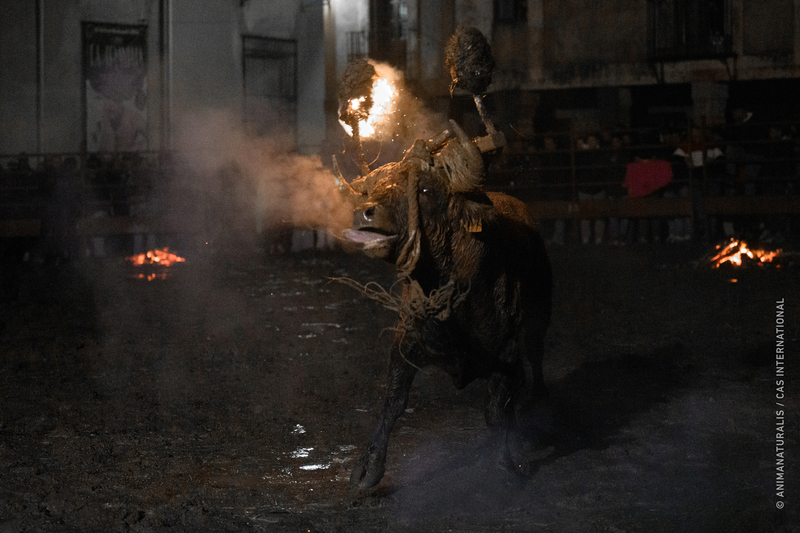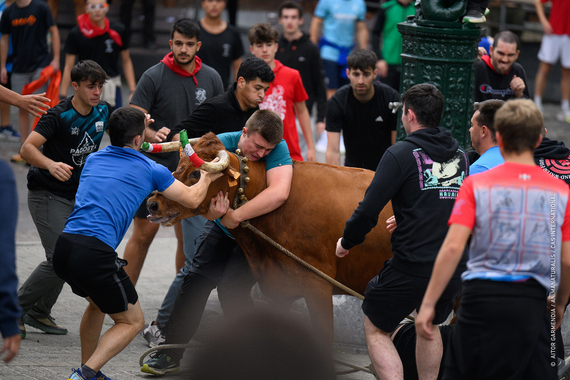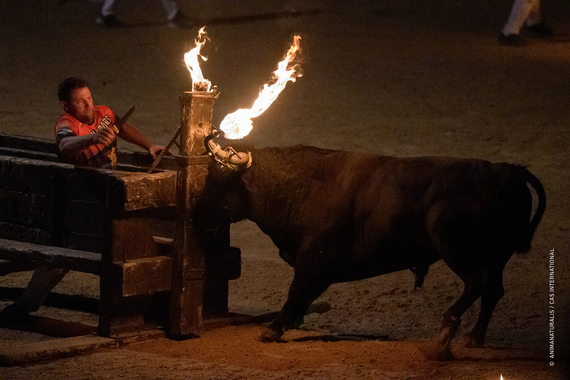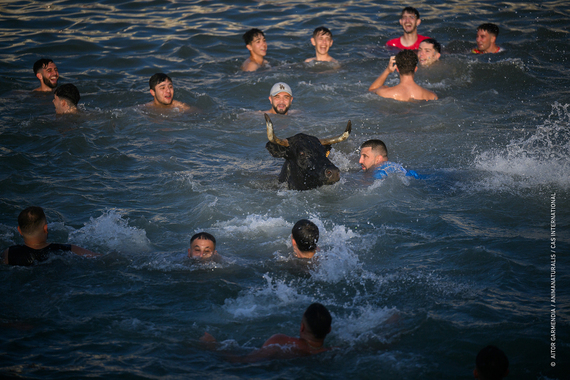
The problem
The celebrations with bulls are a form of cruelty and violence
In the popular festivals of the towns of Spain, the bulls are immobilized, pulled with ropes, attacked, forced to run, thrown into the sea and light torches on their horns. Animals suffer falls, blows, intense suffering, and sometimes death.
The cruelest form of celebration is when balls impregnated with a flammable substance are placed in their horns and lit to see them run desperately.
Campaign
Ban cruel traditions!
We are carrying out the largest and most in-depth investigation of the more than 18,000 cruel events with animals that take place in Spain year after year, and which unfortunately are increasing. We want to bring to light the mistreatment that thousands of peoples hide in their festivities and traditions.
The ranches are endangering the future of bullfights, which have less and less support, and they see a growing business in popular festivities. We want to put an end to the cruel fiestas. Can you help us?
Investigation
 How much public money is given to cruel traditions?
How much public money is given to cruel traditions?
We present our research that shows for the first time the total number of towns that celebrate cruel festivals with bulls, how much public money is given to the organization of these events and the description of all the bullfighting modalities to which tens of thousands of animals are subjected each year.
Public money that is allocated in each
Autonomous Community to celebrations with bulls (2019)
Town that allocates the most public money to events with bulls:
185,787.55€
according to your own official budgets
Azuqueca de Henares
Guadalajara
Town that allocates the most public money per capita to events with bulls:
239.52€
for each of its 54 inhabitants
Fuentelviejo
Guadalajara
Town that holds the most events with bulls:
117
events that use a least 216 bulls
Xàbia
Alicante
Province with the highest number of events with bulls:
4.398
events that use 6,970 bulls
Castellón
Com. Valenciana
Public money that is allocated in each
province of Spain to celebrations with bulls (2019)

Rope bulls
A bull is called a roped bull to the modality of popular bullfighting celebration consisting of the release in a locality of a cow with one or more ropes tied to its head to control its movements and attacks. The rope bull is probably the most atavistic spectacle and also the most distressing for the animal, being the one that limits its movements the most and for the longest time.

Fire bulls
Nearly 2,500 bulls are packed with fire every year in a large number of Spanish cities, all with the approval and subsidies of town halls, councils and regional governments, despite the fact that this practice entails intense suffering for the bull, a victim of exhaustion, blows, falls, as well as disorientation, fear and anguish.

Bulls in the sea
It is a modality that takes place in a square open to the sea located in the port or the beach of the town where it is held. There it is about the bull chasing the fans, who avoid their attacks by jumping into the sea and provoking the animal until it also falls into the water.

Running of the bulls
The release of bulls or running of the bulls are maintained as a custom in practically the entire territory and are common in patron saint festivities in most regions. It consists of a group of people running in front of a herd of 6 to 10 bulls, cows, steers or heifers.

Bullring bulls
It is about loose bulls in a ring, where they are persecuted, harassed and mocked by young men from the town.
Inform us of any cruel festival that takes place in your town or of which you are aware: bloodfiestas@animanaturalis.org
AnimaNaturalis files a complaint against the La Ràpita City Council for holding bull-related events outside the legally authorized dates
22 diciembre 2025
The organization is calling for the opening of sanctioning proceedings for violating Law 34/2010 by organizing bull-related events outside the framework of officially recognized traditional festivities.
We expose the ordeal of the Toro Jubilo in Medinaceli amidst health crisis, protests, and ongoing legal battles
16 noviembre 2025
Despite health restrictions, a massive security operation, and an ongoing legal battle, the cruel tradition of the Toro Jubilo in Medinaceli prevailed once again over the animal's welfare. Its ordeal was documented by our investigation team.
Sokamuturra: dragged by tradition, driven by fear
16 octubre 2025
The sokamuturra, popularly known as the “bull on a rope” or “cow on a rope,” returns every year to the squares and streets of numerous towns in the Basque Country. What many regard as tradition, others —and scientific evidence and animal welfare organizations that have documented its effects— recognize as a practice that causes physical and psychological stress, risk of injury, and, at times, acts of real cruelty repeated without effective sanction.
More than 2,500 bulls are turned into living torches in Spanish traditions every year
13 agosto 2025
While bullfighting is commonly associated with cape-and-sword corridas in arenas, the "toro embolado" (fire bull) is part of a wide spectrum of popular bull festivals where the animal isn't killed. Here we explain what they are and what we must do to end them.
AnimaNaturalis reports 'sokamuturra' event after heifer falls into the sea
07 agosto 2025
We have filed a complaint with the Basque Government over serious irregularities during a bull festival held on July 31st, which continued after a heifer fell into the water in an unprotected area.
Dénia once again the epicenter of animal cruelty with their 'Bous a la Mar'
14 julio 2025
On July 8th and 9th, investigators from AnimaNaturalis and CAS International documented one of the cruelest aspects of Dénia's local festivals: the 'bous a la mar' (bulls to the sea). This spectacle involves chasing young bulls and cows to force them off a purpose-built platform into the harbor waters. What is billed as tradition or entertainment becomes a hellscape for the animals – marked by sheer terror, physical blows, relentless heat, and utter exhaustion.
